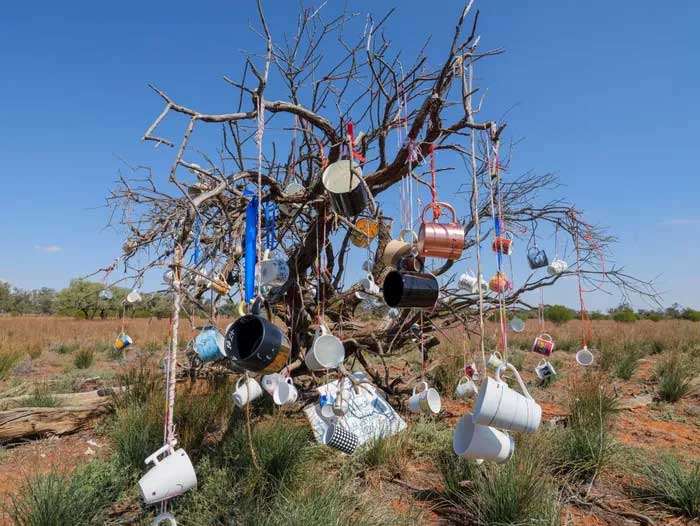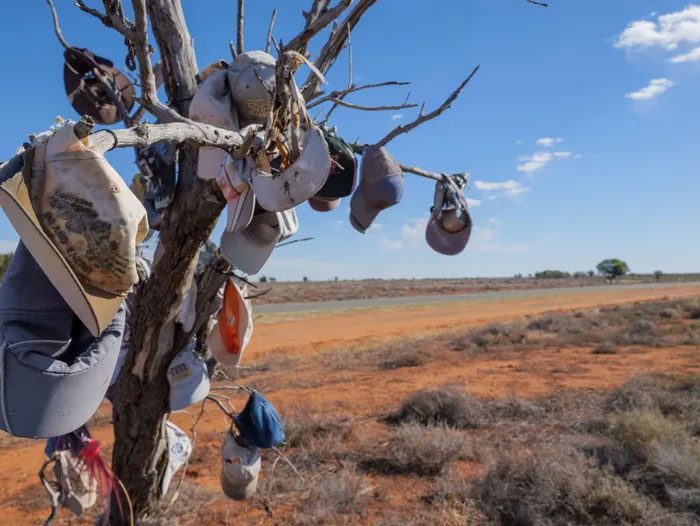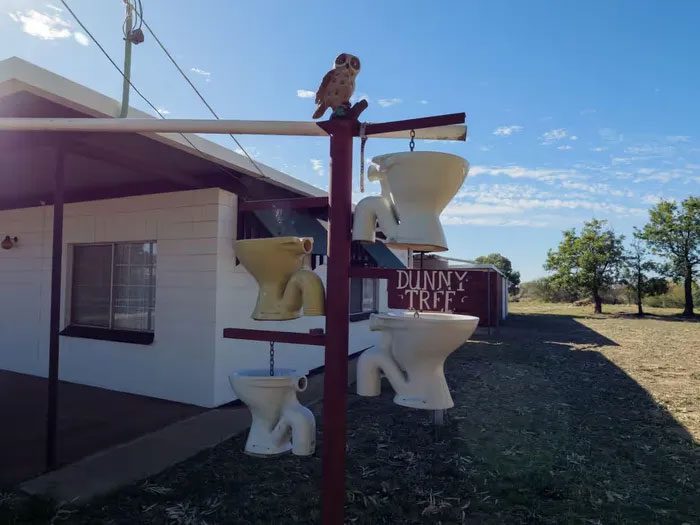The phenomenon of trees adorned with hats, bras, cups, bicycles, and stuffed animals remains an unsolved mystery in Australia, according to The Guardian.

An eucalyptus tree hung with bras on a remote road in Australia. Not far to the south, another tree is filled with old shoes. Meanwhile, along the Murray Darling River, hundreds of flip-flops are nailed to an uprooted tree trunk. Locals refer to it as the “thong tree.”
Such trees are not an uncommon sight in the land of the kangaroo.
The size of items hanging from trees does not stop there. At the end of a gravel road a few hours west of Brisbane (Queensland), an old eucalyptus tree “bears the weight” of five rusted bicycles, two pairs of shoes, and a sign that reads “Onya Tree” – short for “goodonya” or “good on you.”
“Some cases can be explained, while others cannot,” historian and author Nichole Overall remarked after investigating the origins of hundreds of stuffed animals nailed to trees along the highway outside Canberra.

A tree hung with cups.
After years of researching the urban legend behind the origins of these stuffed animals, Overall believes that the roadside “memorials” may partly explain the emergence of these trees filled with plush toys. However, what surprised her was how rapidly they have proliferated and persisted until now.
“This remains a puzzling phenomenon,” she expressed.
On the other hand, the expert indicated that not all item-hanging trees in Australia have mysterious origins. For instance, “the bra tree” was erected in memory of a local deputy principal who passed away from cancer in 2011. There is also “the shoe tree”, which honors the mother-in-law of Nichole Print, who collected over 3,000 pairs of ceramic shoes.
“When she passed, we decided to do this to honor her. We found the perfect tree on the road from Mildura to Adelaide and placed all the pairs of shoes she wore in her lifetime along with our old shoes on it,” Print shared.

A tree hung with hats.
Overall, these “strange” trees are described as a cultural phenomenon that has evolved beyond their original meaning. “This is something that has just begun to gain attention… Stuffed animals have existed for nearly four decades, but people did not know their true significance. Until the trees filled with stuffed animals appeared, people would say, ‘Oh, that seems like a good idea,'” Overall noted.
In South Australia, pots dangle from trees. The creativity involved in these item-hanging trees is limitless, as locals seem to “throw” everything up there: cups, stuffed animals, hats, and plastic unicorns.
Associate Professor John Malouff of the University of New England likens the creators of these intriguing sights to true artists. “I love them, especially the hats and stuffed animals. In a way, this can be considered public art,” he enthusiastically stated.
However, Associate Professor Felicity Fenner, Chair of the Public Art Advisory Council of Sydney, disagreed.

A tree hung with toilets.
“I wouldn’t classify these as art. The purpose of art is to convey a story or present specific issues in creative ways tailored to specific audiences or contexts. When toys and other items become popular on trees like this, they mimic each other and appear everywhere, even in unrelated areas,” she explained.
Furthermore, she disagreed with the notion that “everyone is an artist.”
In response to the situation, a spokesperson for the Australian Department of Environment stated that the government “has no authority over the decoration of individual trees across the country,” although many states and local authorities require permits to modify trees.


















































